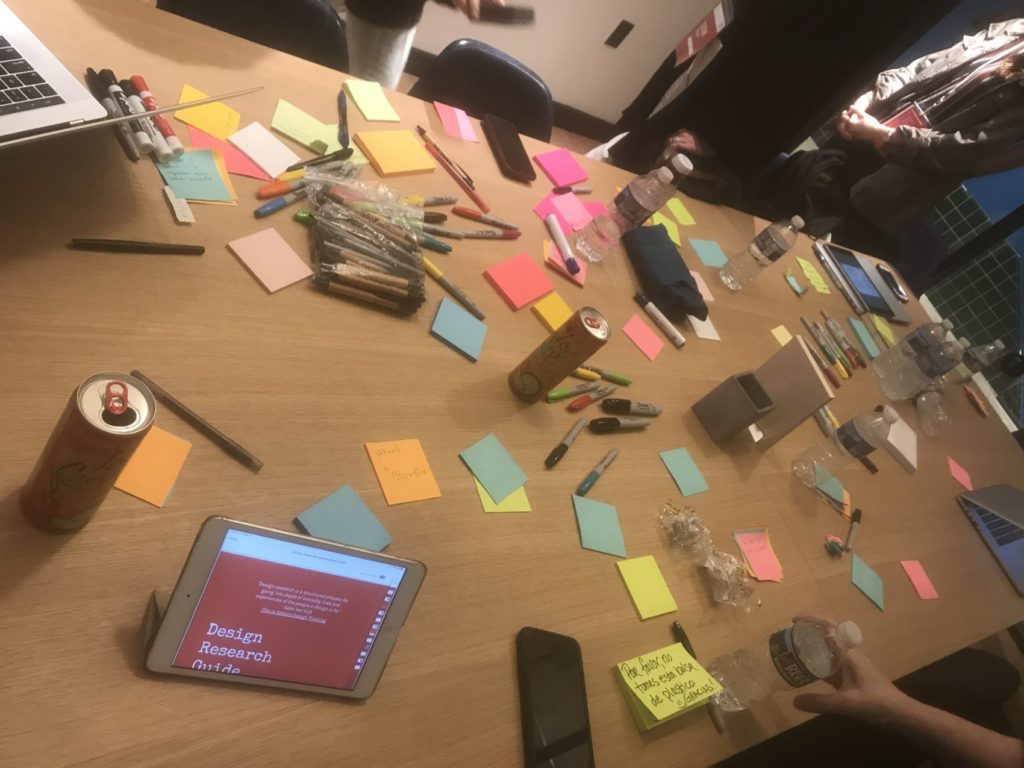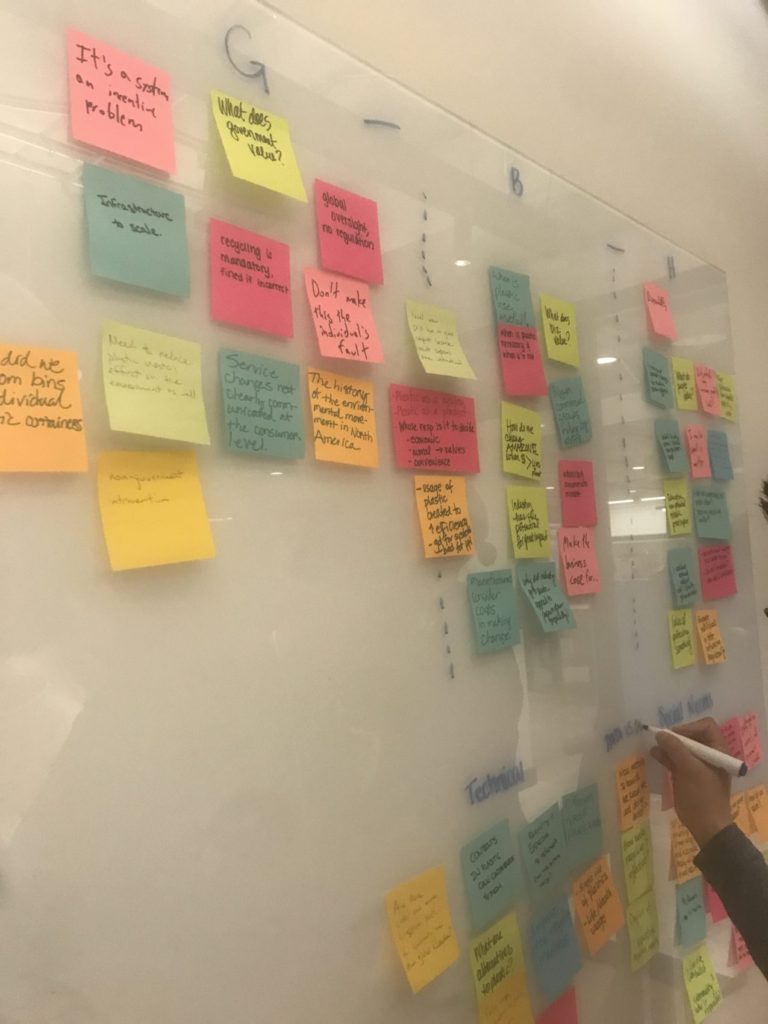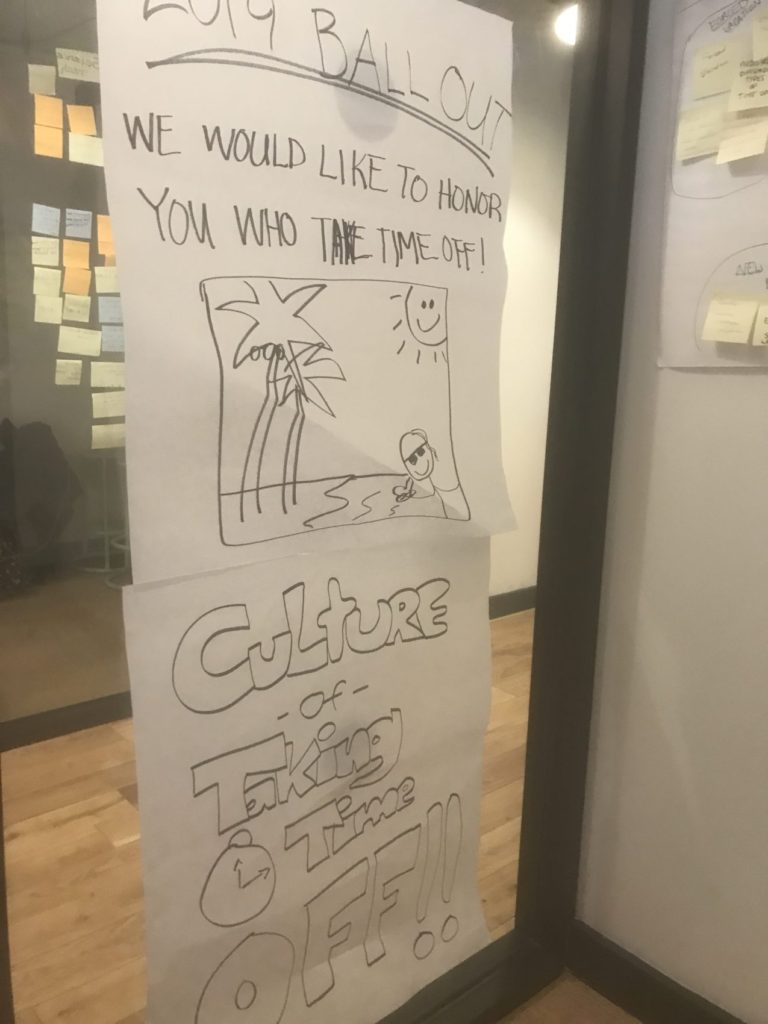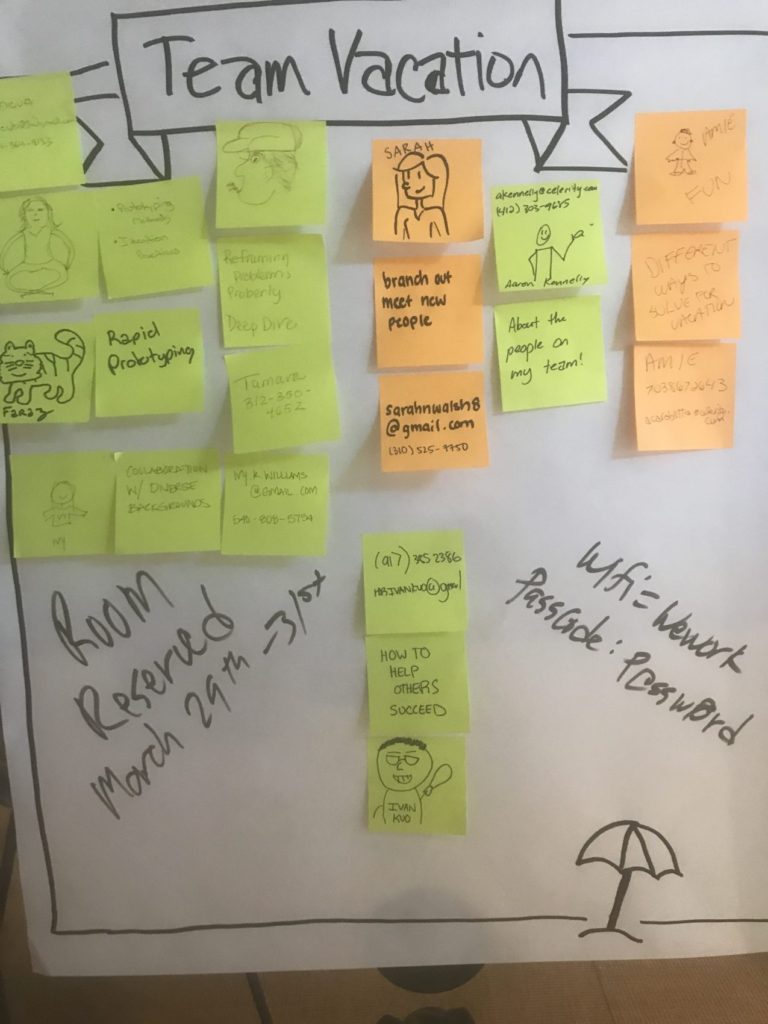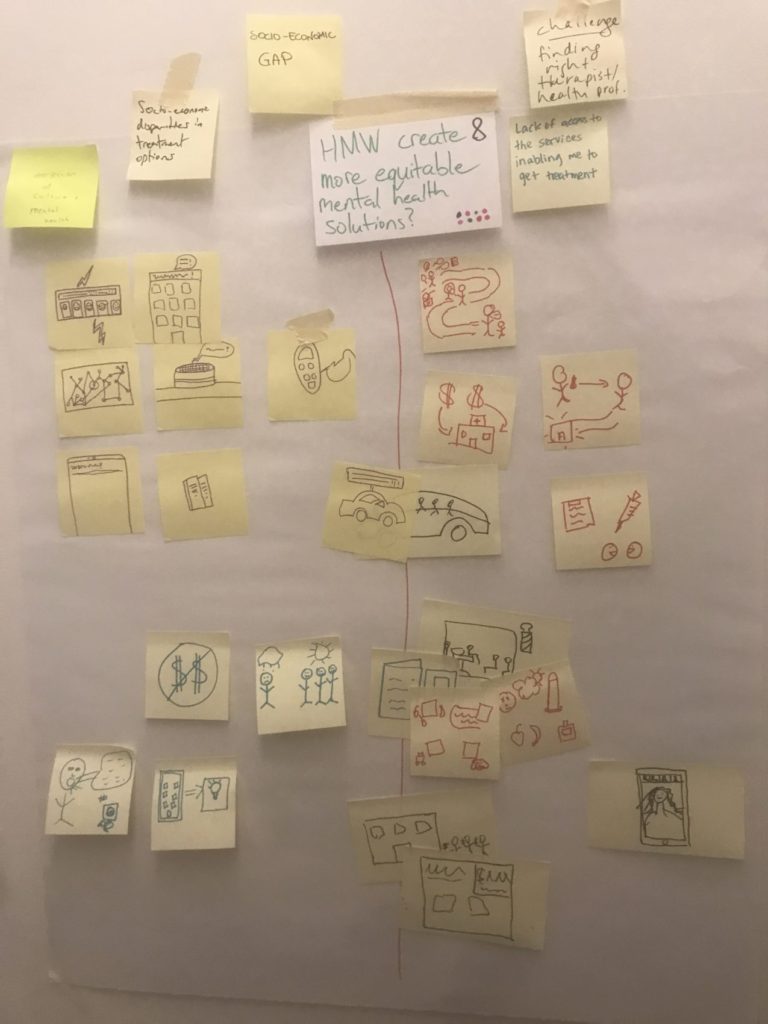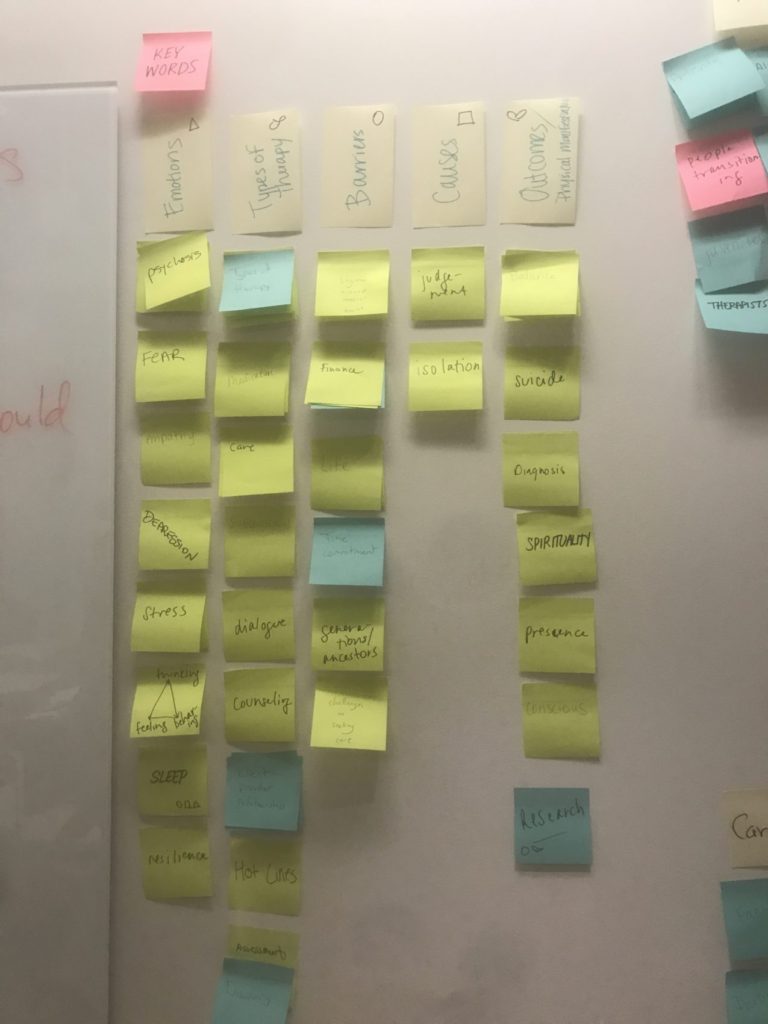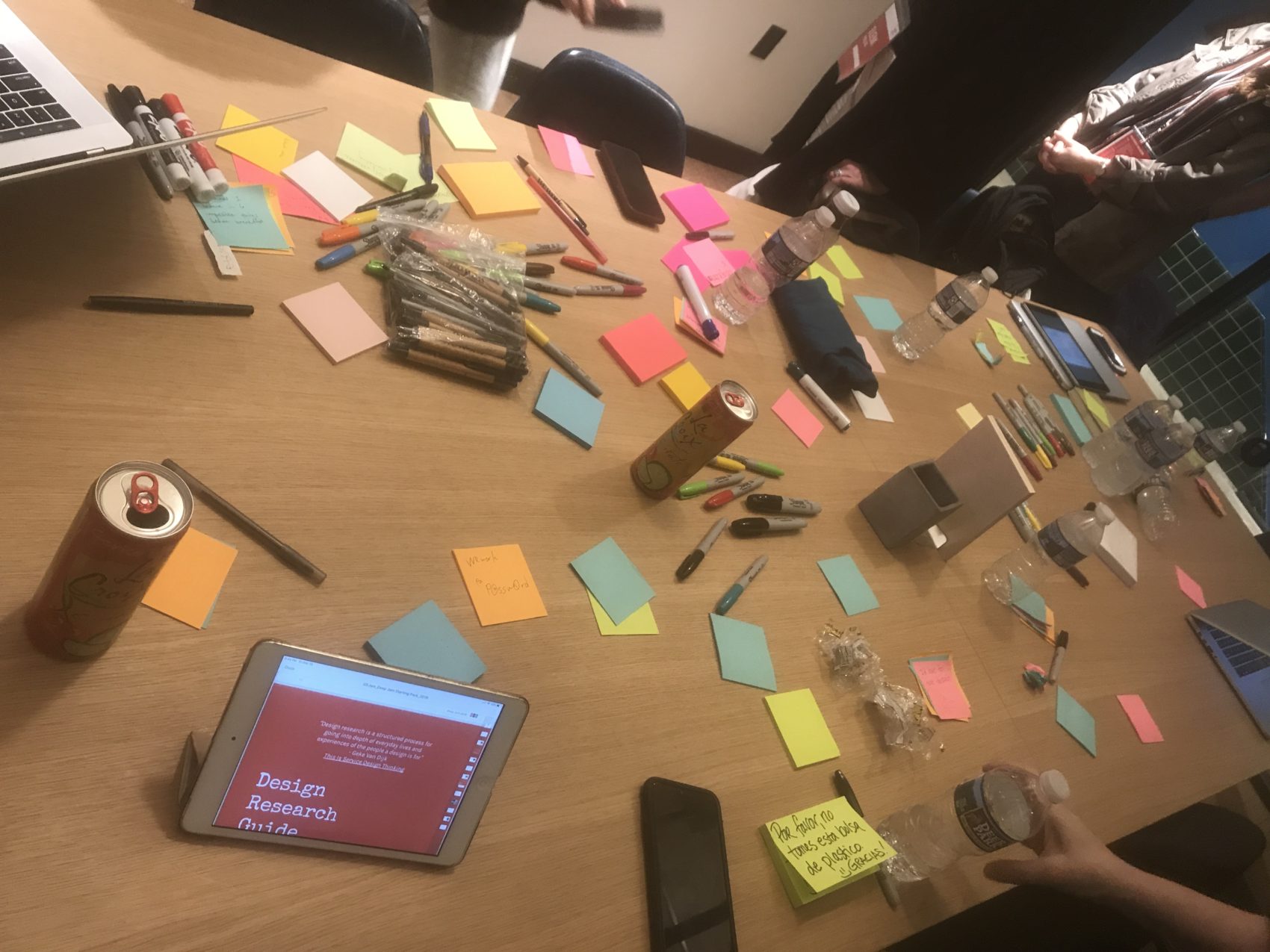
10
May
My Weekend With a Service Jam
[responsivevoice_button voice=”UK English Female” buttontext=”Listen to Post”]
In April 2019 I participated in my first Global Service Jam in DC. It was an effort to get to know the local service design community and practice my skills. For the first time in the organization’s history they wanted to experiment with an unfacilitated Deep Jam wherein attendees self-selected as experts (including myself) and attempted to ideate around a different problem than the problem the rest of the attendees received. I want to say this was a completely enriching and inspiring experience. It was not. So I’m going to share the good and the bad of my weekend with a service jam.
First I want to say how impressive this conference was. When I think of how I’ve spent 10-20 times more money for a cold conference location to listen to expensive speakers and barely get coffee. For two and a half days they fed us real food, hosted us in a wonderful WeWork space, and they gave us real work challenges, all for only $50-$80. The Service Jam was affordable, accessible, and actionable.
”For two and a half days they fed us real food, hosted us in a wonderful WeWork space, and they gave us real work challenges, all for only $50-$80. The Service Jam was affordable, accessible, and actionable.
Unfortunately, in terms of my interpersonal experience with my team, I felt the kind of emotional abuse and toxic work culture that explains why women like me are not usually hired at thought partners and leaders within this fairly new business approach of design thinking and service design. I dealt with the typical: gaslighting, performative solidarity followed by isolation and exclusion, co-opting if my ideas without my involvement, no consistency or integrity, no accountability.
”On Day One, I felt confident, I knew who I was, and was ready to continue applying my service design skills. By Day Three, I felt like I had shrunk. I got quieter, more paranoid, more doubtful.
Podcast | The Crazy One with Stephen Gates | Why cognitive bias is the real problem in your work.
All of these behaviors had an accumulative effect. On Day One, I felt confident, I knew who I was, and was ready to continue applying my service design skills. By Day Three, I felt like I had shrunk. I got quieter, more paranoid, more doubtful. I felt stuck. This I made myself emotionally vulnerable to these people, and they abused it. I wound up confessing my unemployment status under duress. It made the rest of my time with that team less and less productive. And by the end, I ended up really not trusting them. For example, I could see that on Friday night we were flailing a bit with our freeform thoughts. So later that night on the Slack channel I suggested to the team that we should start service blueprinting, and offered the team my service blueprint (the one I created for UX Week) as a framework. I did so thinking we could plot our initial thoughts through that process, and figure out where they make sense within the system. I got no response. During presentation time, I saw how they took bits of my contributions (after telling me they were flawed), then wedged them into their presentations. It was as if my confidence was seen as a threat. So it was broken down until I could no longer function.
But it wasn’t all bad. My favorite time during our breakout sessions was when we went out into the streets and gathered user feedback through in-person interviews. My partner and I split the task; I would ask questions while he typed their responses. We met some smart and insightful people during those interviews. This part, I’m told, is often the hardest part of service design.
”When I looked at other teams’ workflows who truly showed they understood service design in their post-it work (looking at stakeholders within systems, thinking about employees, ) service design was more baked-in and subtle by presentation time.
One person made themselves the de facto leader, without getting consensus. They never committed to what we all agreed to do. They did a lot of talking and did not listen. They were combative, condescending, and frankly a terrible practitioner of service design. By Sunday the organizers allowed me to leave the Deep Jam, and observe other groups. When I looked at other teams’ workflows who truly showed they understood service design in their Post-It work (looking at stakeholders within systems, thinking about employees, ) service design was more baked-in and subtle by presentation time.
Another team member was a different case. They were emotionally vulnerable, and also emotionally manipulative. They brought up a lot of personal issues very early, setting a tone that made their emotional comfort top priority over everyone and everything else. They essentially treated a learning workshop like an emotional retreat or some kind of group therapy (which is how I wound up confessing my current unemployment to most of the group; something I didn’t want to say).
I reached my boiling point by Sunday when I could tell the dysfunction was spilling out into the rest of the workspace. I was followed out of the room by another member. I was inappropriately approached by another in the lunch line.
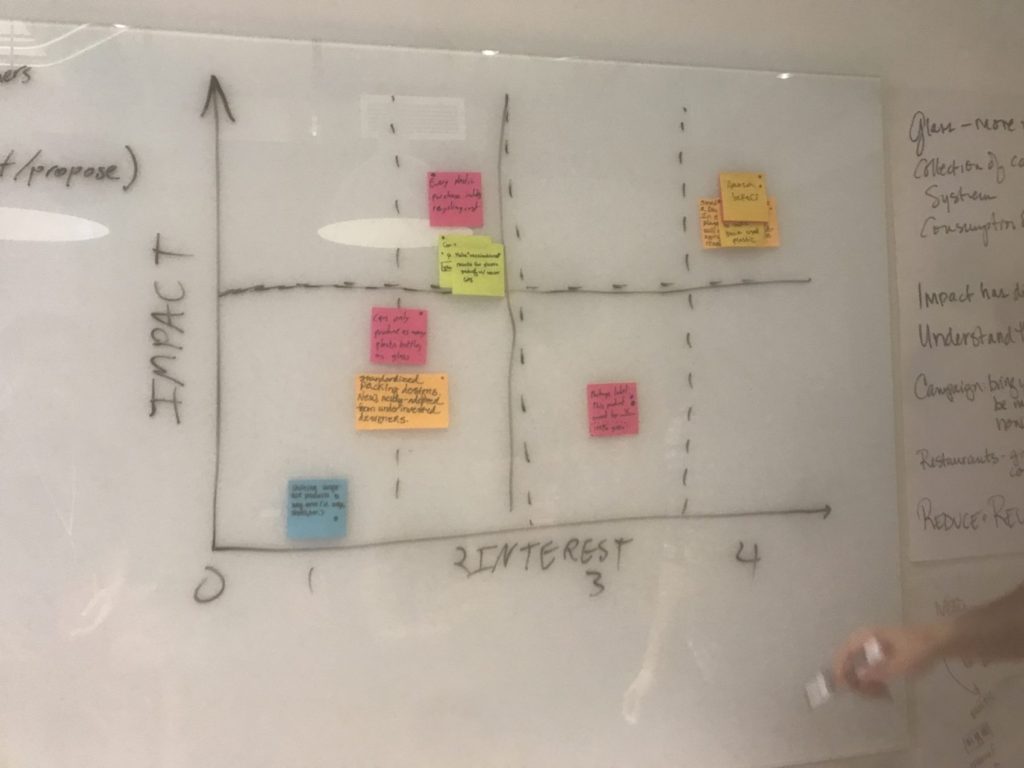
Saturday night in the Deep Jam. By this point we’d finally broken up into two groups. Here our team is breaking up our “how might we’s” into quadrants. These are the ugly sides of archiving your evidence to show that you know how to ideate and rapid prototype. You cannot tell in this image that I am the only woman and the only woman of color on this team. Nor can you tell how angry and deflated I had become. I tried my best to keep a brave face in the face of undermining my contributions. By Sunday morning, I was allowed to Ieave this group and opted to observe how other groups were functioning.
”This experience also forced me to question if some of all this evidence-gathering to show your UX and service design experience actually reveals problematic dynamics within a team.
To the credit of the organizers, once they figured out that the deep jam team was struggling, they did what they could to intervene. I appreciate that an event leader introduced me to a team that was focused on mental health, who was more on track and let me observe their work and interactions. It was like night and day. It was the experience I hoped to have gotten out of this weekend. Where service design is practiced at every level, not just trying to fit customer journey mapping into a service design framework. You could really see their sense of zooming in and out of the experience of a service without allowing themselves to get overwhelmed. They were also well-facilitated.
I was told that the deep jam was an experiment. It wound up becoming a kind of social experiment to see how dysfunctional a team could become without a facilitator or coach. This is essentially what happens when management is nonexistent. This is how people leave companies. This is how women like me don’t get hired, retained, supported, and promoted. This experience also forced me to question if some of all this evidence-gathering to show your UX and service design experience actually reveals problematic dynamics within a team. It may be possible, for professional purposes, to put on a brave face and say one survived the hard process of service design. But if in the end, it didn’t make one a better design thinker and innovator, nor a better thought partner and coworker, photos of Post-Its can only say so much.
But also feel incredibly guilty for even writing this on my blog. I’m unemployed right now. I am aware of how this experience paints me e certain way. If I portray a team experience and negative or toxic, the question will inevitably be, “Well, what did you do?” All I can say is that I did my best in a less-than-ideal situation, and learned a big lesson.
What I learned from this weekend and in other design thinking exercises, is to bring my whole self to the proceedings. I have previously been part of and saw during the Service Jam what happens in other teams when everyone trusts one another to see a great idea through to completion. I have been on larger design thinking teams where my simple awareness and perspective makes a crucial difference in the outcome. I refuse to apologize for being an applied artist and design AND an applied design thinker. And because of that, I cannot allow my time and talent to be abused or exploited. I have to be myself, unapologetically.



